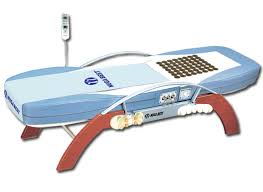When I arrived at the address stated in the flyer, I almost turned back - because the whole hall was jam-packed with people - mostly senior citizens. Luckily, there is a separate room for first timers. But even that had a queue, so I had to wait outside for a couple of minutes. I could hear a seminar/talk being conducted by a nurse regarding the benefits of the machine.
She was holding a doctor's sample skeleton, but it was just the spine. It looked like this:
 |
| Doctor's plastic spine from Google |
By that time, I was imagining nutrients about to go to my vocal cords but are stopped because of vertebral impingement. Or, I was thinking, perhaps if she's incorrect about the blood flow/blood vessels having a relation to vocal cord function, then nerve impingement could still be there. So nerve communication could still be hindered.
Later on I found out that the Cervical Spine C3-C7 or the mid to lower neck areas are the ones that have nerves or blood vessels that are connected to the vocal cords.
Anyway to cut the story short, I tried it for about 12 to 15 consecutive days, liked it and bought the machine. I also had scoliosis and upper back and neck pain so since the immediate effect was that of back pain, I decided to buy one and continue using it. It was expensive though. It costs about USD3,000 which is a lot of money here in our country if you convert it to Philippine peso. But then, that's the way it is, medical relief comes with a price. But it is worth it, for me.
The name of the machine is Nuga Best. It's basically a bed with jade rollers. You lie on it flat on your back and the roller goes up and down the spine massaging the back.
It wasn't hard for me to believe in the good effects of spinal alignment because I have been exposed to chiropractic in my teenage years. And as for the jade stone rollers, because I know that jade stones have energy-giving properties. I am half Chinese. My grandmother made my sister wear a jade bracelet from China and somehow she noticed that she had been healthier when she was wearing it. She contracted most of her illnesses after her bracelet broke and she didn't have it replaced. She's back to wearing one. It might be superstition for some, but I believe there is a scientific mineral composition explanation to it.
Well, I've been using the Nuga Best bed for 2 years now and it still helps my spine. I'm not sure if it is this or the specialized voice therapy that has helped with my voice. I did both in conjunction. But perhaps the combined effect was synergistic. I was re-training my voice with therapy and Nuga Best was helping solidify the new voice and heal the muscles and ligaments of the vocal cords.













